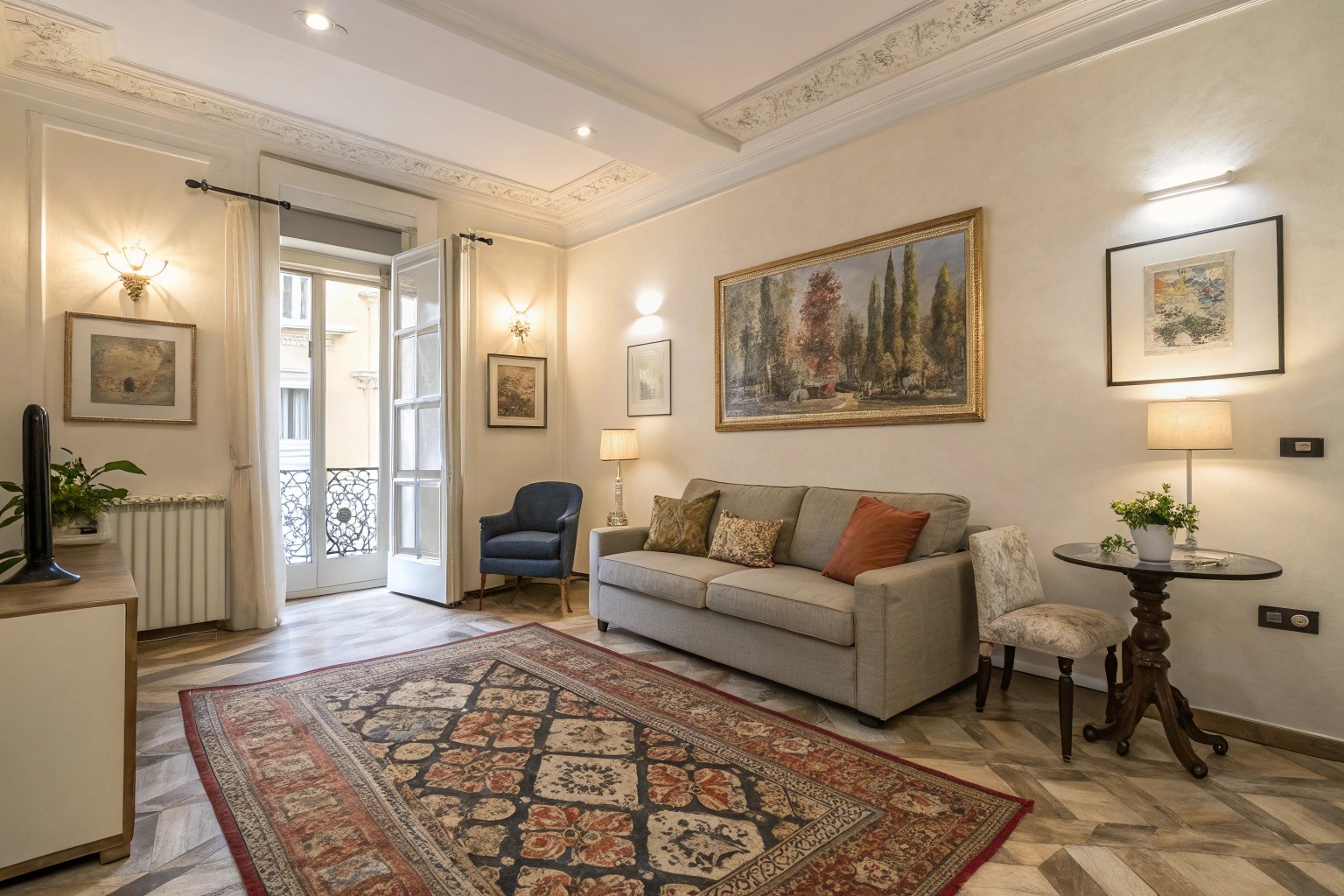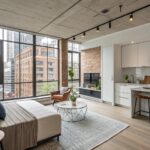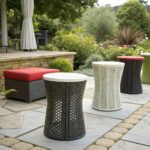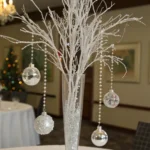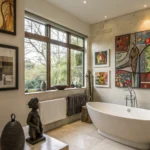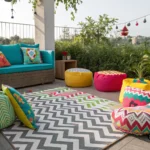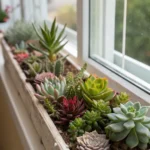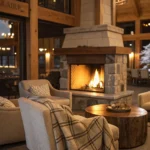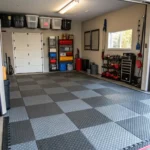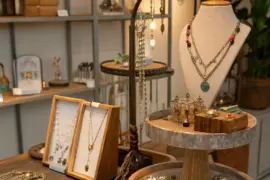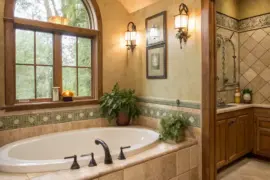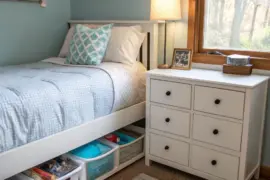Those outdated tiles, scuffed hardwood, or cold concrete floors don’t have to define your space. As someone who’s transformed countless rooms plagued by challenging flooring, I’ve discovered that the right design approach can shift attention away from what lies beneath our feet to create truly beautiful spaces.
Understanding Your Flooring Constraints

Before diving into solutions, it’s important to assess what you’re working with:
Types of Problematic Flooring
- Dated patterns or colors: Retro tile patterns, red-toned woods, or 90s-era linoleum
- Damaged surfaces: Scratched hardwood, cracked tiles, stained concrete
- Structural issues: Uneven surfaces, cold floors, or hard surfaces in need of softening
- Rental restrictions: Floors you legally cannot modify
Budget and Timeline Considerations
Your approach will differ based on whether you:
– Need an immediate, temporary solution
– Can invest in semi-permanent modifications
– Plan to eventually replace the flooring entirely
Cover It: Temporary Solutions That Work
When replacement isn’t an option, covering strategies offer immediate relief without permanent commitment.
Strategic Rug Placement
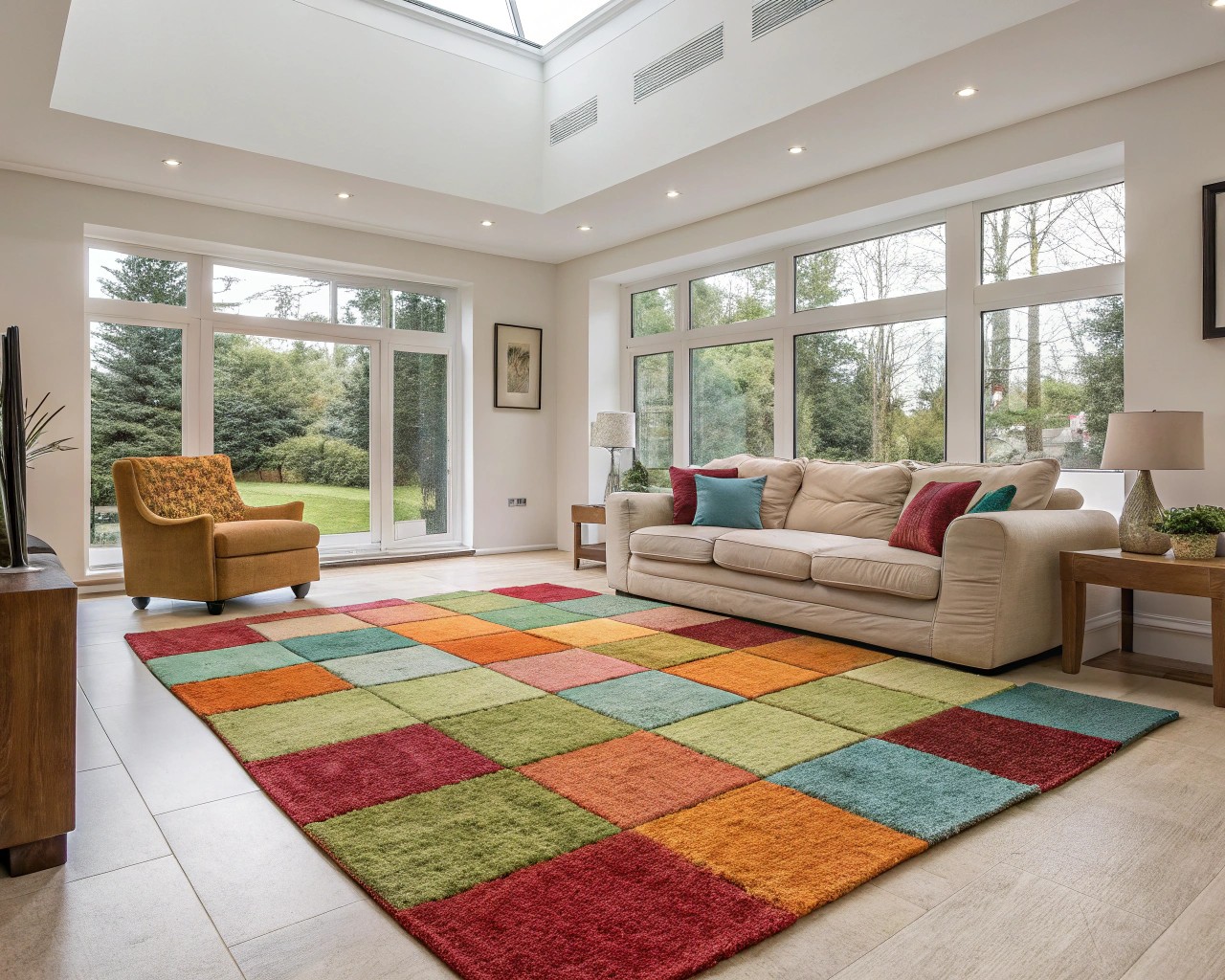
Oversized area rugs remain the gold standard solution for problematic flooring. “While I’ll still leave a border of flooring showing around the perimeter of the room, covering the majority of the space with a rug I love is a game changer for hiding floors,” notes interior designer Galey Alix.
When selecting rugs:
– Size up: Choose larger than standard sizing—if you’d typically use an 8×10, consider a 9×12 instead
– Placement matters: In living rooms, ensure at least the front legs of furniture sit on the rug
– Layer strategically: Use multiple rugs to define zones while covering more floor area
Removable Flooring Systems
Perfect for renters or those seeking temporary solutions:
- Peel and stick tiles: These thin vinyl options can transform a space in hours with modern patterns and textures
- Interlocking floor tiles: Available in rubber, foam, or teak options that require no adhesive
- Carpet tiles: Modular squares that can be mixed and matched for custom looks and replaced individually if damaged
I recently worked with a client who transformed her laundry room using peel and stick tiles in a bold geometric pattern. The entire project took about two hours and completely changed how she felt about the space without any permanent modifications.
Distract: Design Strategies to Shift Focus Upward
Sometimes the best approach isn’t covering the floor but redirecting attention elsewhere.
Creating Compelling Focal Points
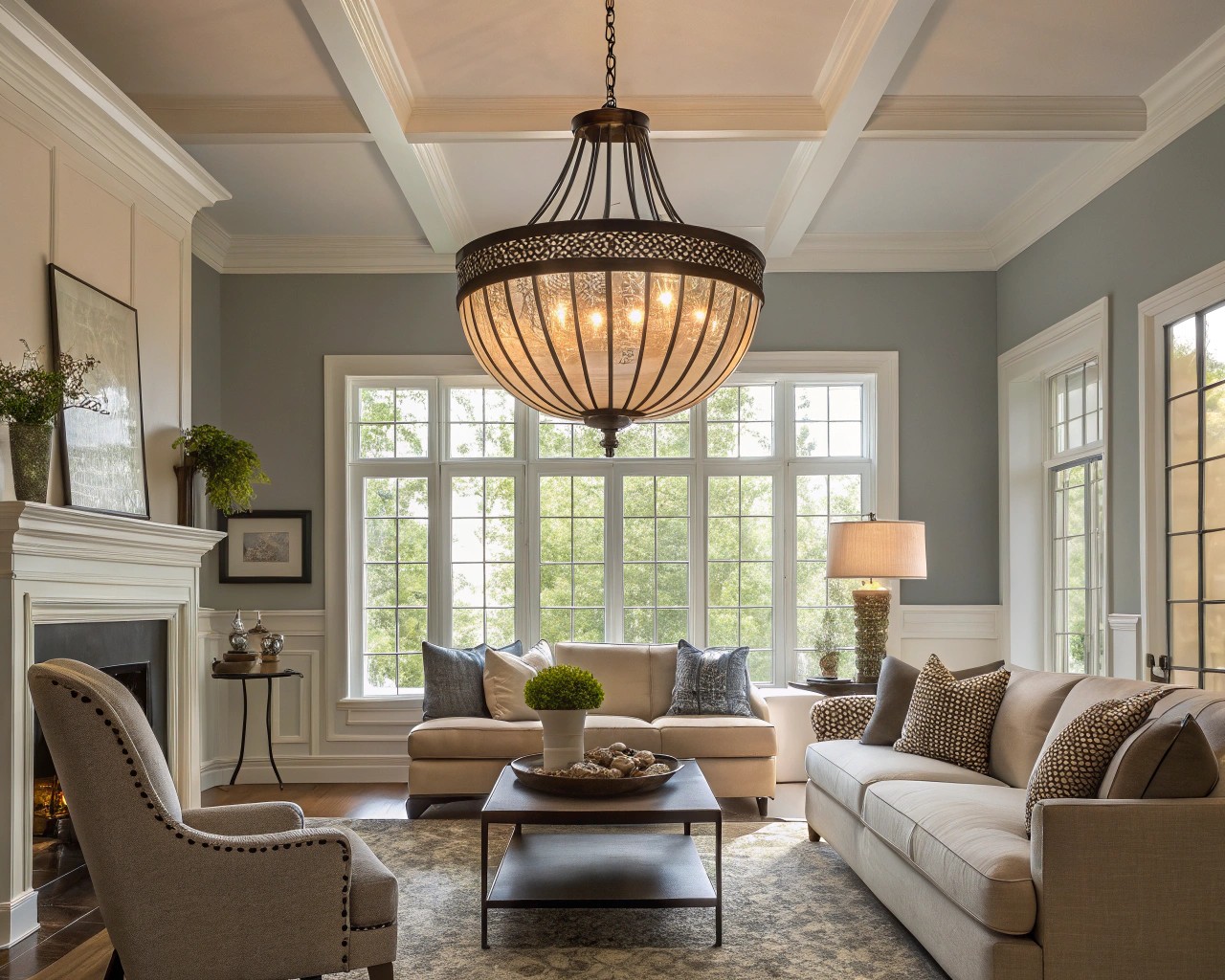
Every room needs a visual anchor that draws the eye:
– Statement lighting: An eye-catching pendant or chandelier pulls attention upward
– Accent walls: Bold wallpaper, paint colors, or textural elements create visual interest
– Art installations: Large-scale artwork or gallery walls command attention
Furniture Selection and Placement
Your furniture choices can significantly minimize the visual impact of unattractive flooring:
- Oversized pieces: “Large sectionals, double-wide nightstands, oversized coffee tables, chunky ottomans… become the focal point of the room and help visually block off some of the flooring you might otherwise see with more diminutive furniture,” explains designer Galey Alix
- Strategic arrangements: Create intimate conversation areas that feel intentional rather than dictated by the floor beneath them
- Height variation: Mix furniture heights to create visual rhythm that draws the eye upward and away from the floor
Balance: Working With (Not Against) Your Flooring
In some cases, the most successful approach is embracing the floor’s characteristics while creating balance through other elements.
Color Layering Strategies
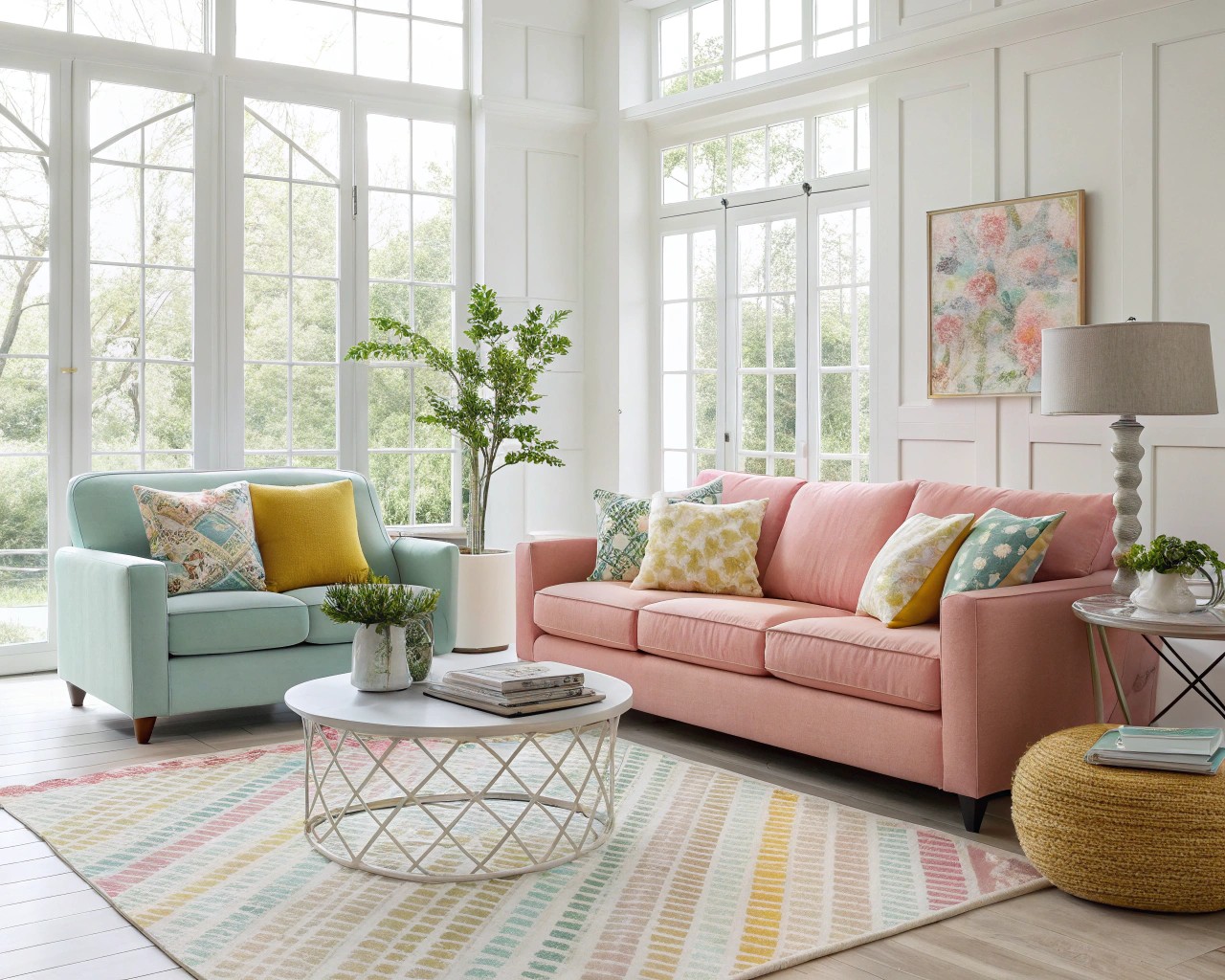
The key to working with challenging flooring is thoughtful color coordination:
- Start with a neutral base: Use soft whites, warm grays, or beiges on walls to create a calm foundation
- Introduce a dominant color: Select a primary non-neutral hue for larger furniture pieces or accent walls
- Add secondary and accent colors: These smaller pops of color create depth and interest throughout the space
I once worked with a home featuring outdated terracotta tile throughout the main living areas. Rather than fighting it, we embraced a warm Mediterranean palette that incorporated the orange-red tones as intentional accents. Visitors regularly comment on how “perfectly coordinated” the space feels, never realizing it was designed around problematic flooring.
Texture and Material Mixing
Balance hard, cold, or dated flooring with contrasting textures:
- Soft textiles: Plush pillows, throws, and upholstery soften the overall feel
- Natural elements: Wood, rattan, or stone create organic warmth
- Reflective surfaces: Mirrors, glass, and metallic finishes add dimension
Zone Strategies: Defining Spaces Within Open Plans
Ugly flooring can feel especially overwhelming in open-concept spaces. Creating distinct zones helps break up problematic floors while enhancing functionality.
Furniture Arrangements as Room Dividers
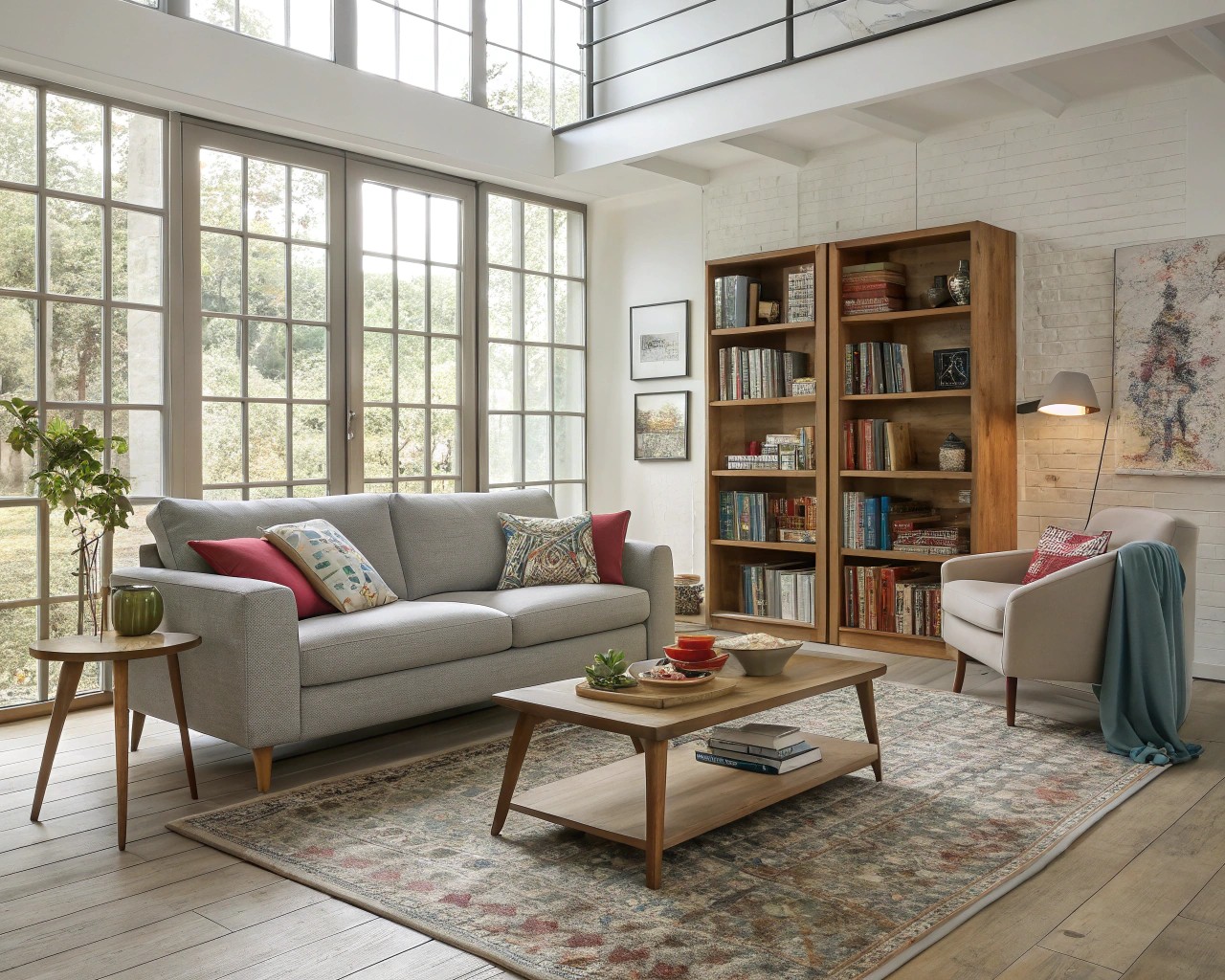
- Back-to-back seating: Position sofas or shelving units to subtly outline different areas
- Conversation groupings: Create intimate seating arrangements that feel intentionally placed
- Area-specific lighting: Use pendant lights or floor lamps to visually define zones
Multi-Level Solutions
Playing with levels creates both visual and physical separation from unattractive floors:
- Platform areas: Raised seating or sleeping zones (where structurally appropriate)
- Sunken spaces: Where possible, delineate conversation areas with slight level changes
- Varying furniture heights: Use taller pieces for visual separation while keeping sightlines open
DIY Interventions for the Bold
For those willing to take some calculated risks, several DIY approaches can transform ugly flooring:
Paint Solutions
- Floor paint: Specially formulated paints can refresh concrete, wood, or even tile floors
- Stenciling: Create patterns over existing floors using floor-specific stencils
- Grout refresh: Use grout pens or paint to renew tired tile without replacement
Simple Installations
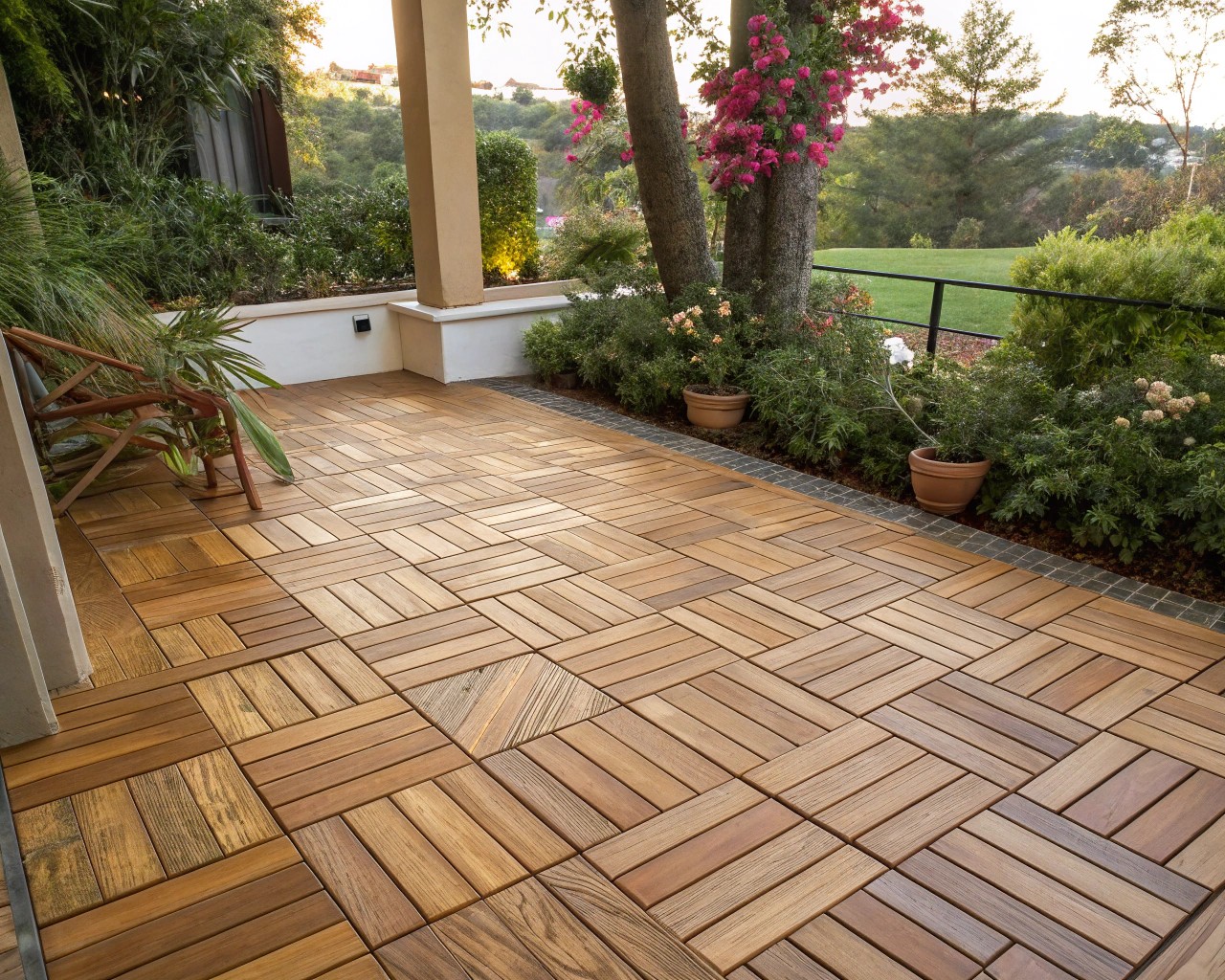
- Floating floors: Click-lock laminate or vinyl planks can be installed directly over many existing floors
- Carpet squares: Easily installed with double-sided tape in specific areas
- Outdoor solutions: For patios or porches, consider interlocking teak tiles that can move with you
Real Solutions for Specific Flooring Challenges
Working With Red-Toned Wood
Designer Gaia Guidi Filippi notes that red-toned wood flooring can appear dated in many contexts. If re-staining isn’t an option:
- Balance with cool blues and greens in furnishings
- Use natural fiber rugs (jute, sisal) to neutralize the warmth
- Incorporate black accents to ground the space
Managing Concrete Floors
Cold, industrial concrete doesn’t have to feel unwelcoming:
- Layer area rugs for warmth and comfort
- Add floor cushions and soft seating
- Consider rubber interlocking tiles in high-traffic areas
Transforming Dated Tile
Those pink bathroom tiles or kitchen floor mosaics from another era:
- Choose complementary colors rather than competing ones
- Use grout refresh pens to modernize the lines between tiles
- Place strategic bath mats or kitchen runners over the most problematic areas

